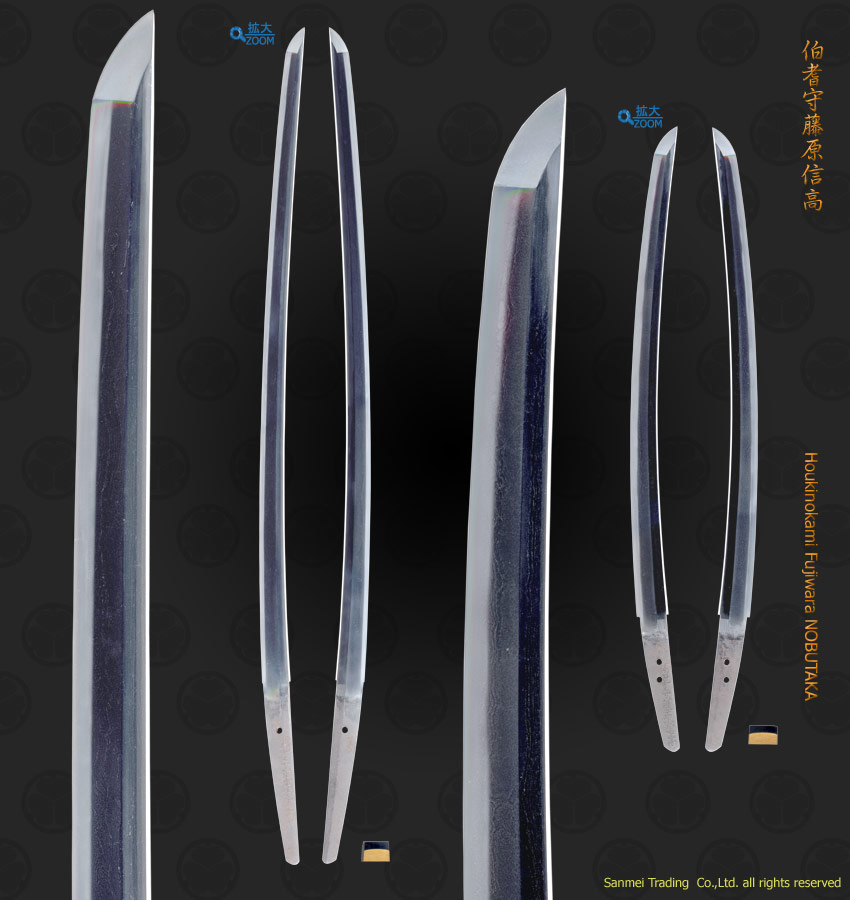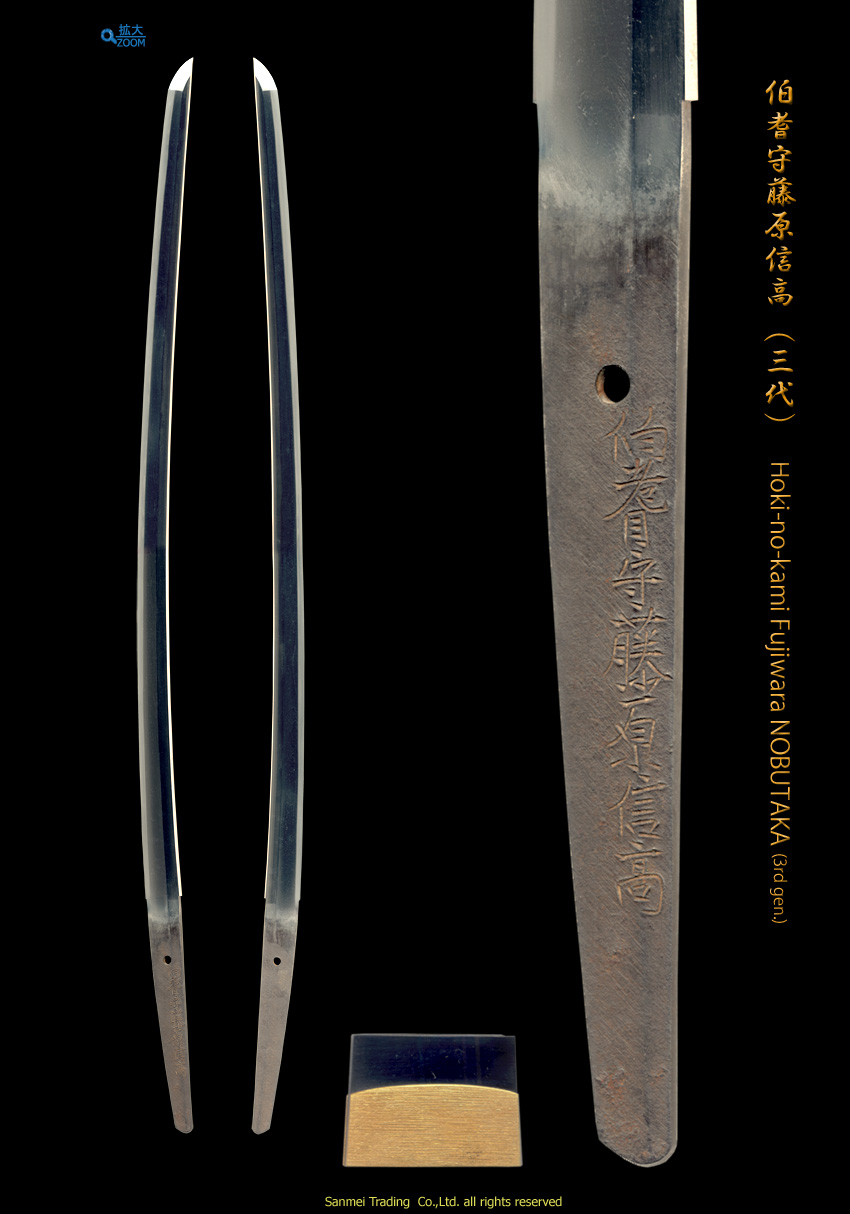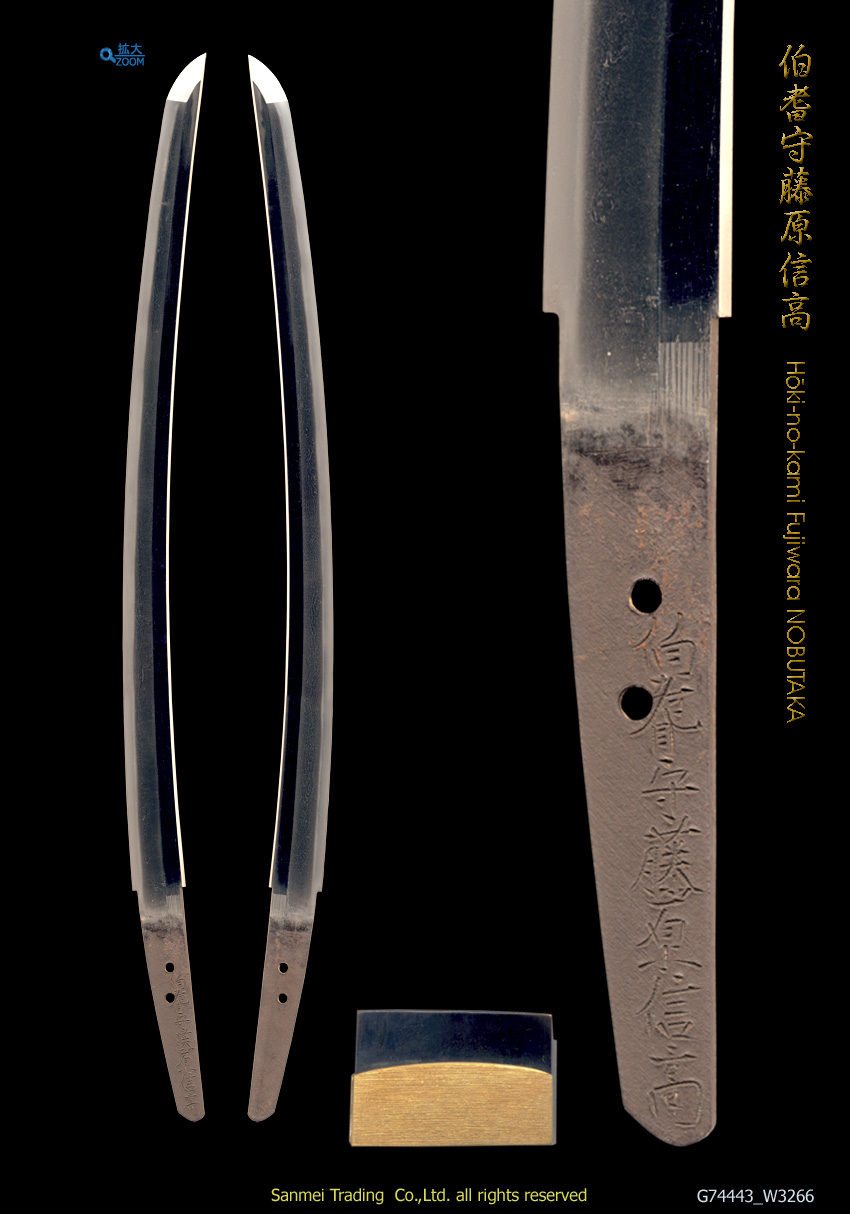Signed Hokinokami Fujiwara NOBUTAKA
wakizashi : NBTHK(Hozon)
Dai : Length of cutting edge70.3cm Curve1.2cm Width of base30.7mm Width of Yokote19.0mm Thickness of base7.8mm (click HERE for supersized image)
Sho : Length of cutting edge52.3cm Curvature1.6cm Width of base33.6mm Width of Yokote21.7mm Thickness of base7.2mm (click HERE for supersized image)
The subject DAISHO pair are good examples of smith Nobutaka : Katana, it is long and wide on base at hamachi and there is shallow curve with high shinogi-ridge, massive hiraniku leading to a middle kissaki. The kitae is Itame (large wooden grain) mixing in with flowing masame hada of which surface is covered in ji-nie hard metal granules. Hamon is straight base, small gunome of which thick feet frequently work toward the cutting edge and there are Hotsure (frayed temper line) here and there. The interior of temper is filled in with bright NIOI. The wakizashi, it is stout with wide mihaba on base, deeply curved and heavy on hand. There is rich and conspicuous activity of large itame hada and mokume with ji-nie that glitters in the light, that has close resembles to a work of NORISHIGE-hada. This DAISHO pair are good examples of works which had been owed and treasured by Owari Samurais holding brave spirit, and it is understood that smith Nobutaka was particularly skilled to meet with their requirement.
Gold foiled Owari habaki collar (Upper shell is gold foiled/lower one is copper alloy shakudo), Shira-Saya plain wood mounting.


